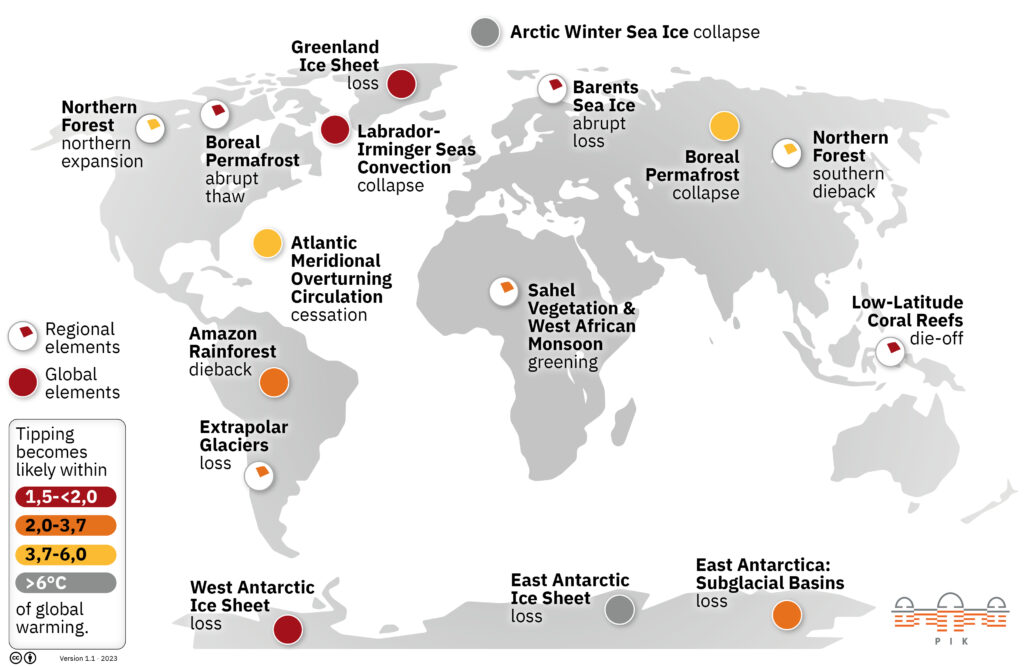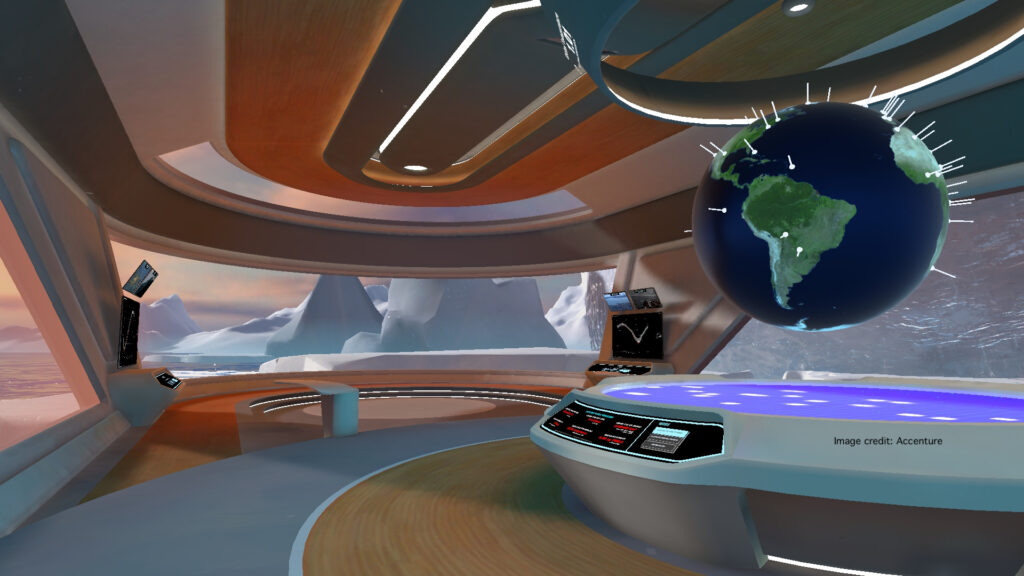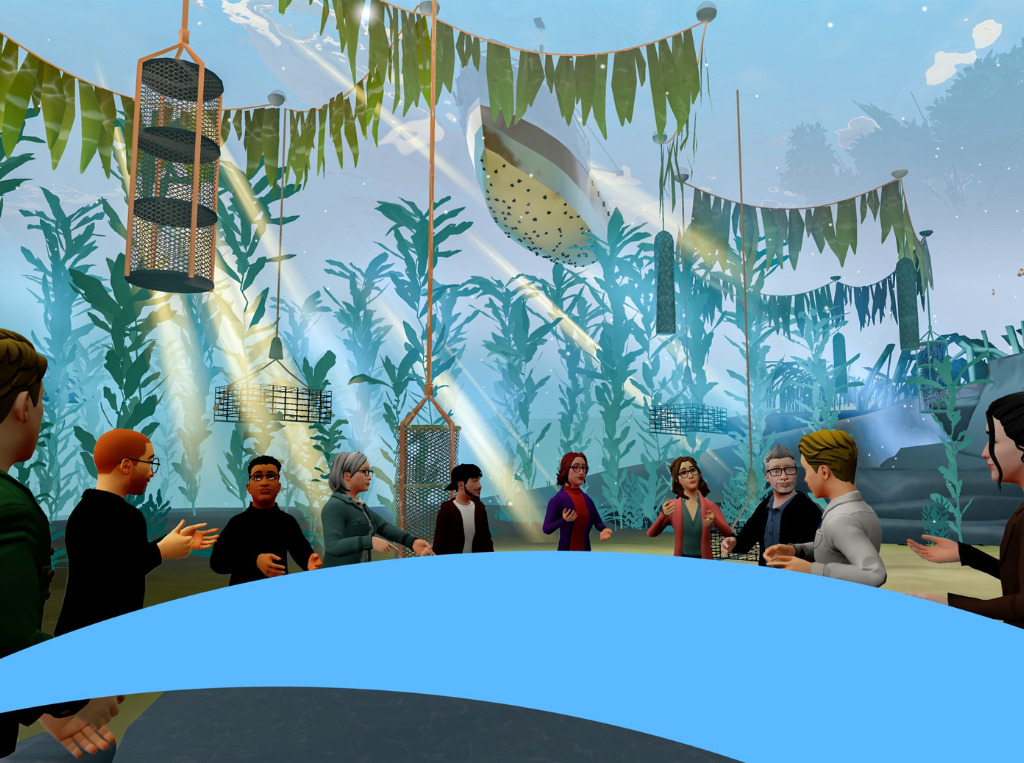Global Collaboration Village: Can this Metaverse Hub Help Fight The Climate Crisis?
4 Mins Read
The World Economic Forum (WEF) has launched the Global Collaboration Village, a metaverse hub to help craft solutions to the climate crisis. It brings together leaders from across the world virtually to address polar tipping points, which it says have the potential to disrupt the planet’s interconnected systems.
Think of climate tipping points like the butterfly effect. If one of these events happens, it sets in motion a change of other ecological disasters. Essentially, tipping points take place when climate change pushes temperatures beyond a specified threshold that can have an irreversible damaging impact on the planet.
The Potsdam Institute for Climate Impact Research has identified 16 tipping points and elements across the world. These include the loss of ice sheets in Greenland, West Antarctica, and East Antarctica, as well as subglacial basins in the latter and all extrapolar glaciers.
The collapse of the Arctic winter sea ice, boreal permafrost (plus its abrupt thawing), and Labrador-Irminger Seas convection, as well as the dieback of the Amazon rainforest, the southern part of the Northern Forest – and the expansion of its northern part – and low-latitude coral reefs are part of the list too. The cessation of the Atlantic meridional overturning circulation, abrupt loss of Barents Sea ice, and greening of the Sahel vegetation and West African monsoon make up the rest.

In fact, earlier this year, a new report titled The Breakthrough Effect was unveiled at the WEF, outlining three “super-tipping points” in key areas including electric vehicles, green fertilisers and plant-based proteins.
The 16 tipping points are at risk with different degrees of temperature rises above pre-industrial levels. Human-induced global warming is breaching the 1.5°C limit agreed in the 2015 Paris Agreement and has meant that six of the tipping points are in precarious states (even if temperature rises stay below 2°C). Five of these, as noted above, are in the polar regions.
The risk of human-caused emissions and the albedo effect
The WEF’s new Global Collaboration Village aims to address these intensifying climate change effects by bringing global leaders together via next-gen metaverse tech. The immersive reality hub will help address these climate tipping points, particularly those in the polar areas. The Polar Tipping Points Hub will allow experts to visualise the consequences of polar warming on the planet via a monitoring station, providing insight into three of the five tipping points if temperature rises exceed 1.5°C.
The tipping points can lead to instability across the planet. One impact is called the albedo effect, which refers to the reflectability of surfaces. High albedo reflects more sunlight, while low absorbs it. This means that the whiteness of the snow and ice layers reflects heat away from the Earth’s surface, preventing it from warming the oceans and land any further. Due to the loss of snow and polar ice, the albedo effect is declining.

In addition, the WEF highlights the relationship between human-caused emissions and climate change – 97% of actively publishing scientists say climate change is happening and caused by humans. An increase in GHG emissions will lead to a decline in sea ice in the Arctic, which is “accelerating global vulnerabilities like extreme weather, heat stress, compromised food and water security, climate migration and disruptions in supply chains”.
The launch of the new hub coincides with the Arctic sea ice reaching its annual minimum extent – which refers to the total area covered by ice. Last year, it reached 4.67 sq km, which was the joint 10th-lowest minimum recorded in 43 years. This adds a “timely emphasis on the pressing need to address polar warming and climate challenges”, the WEF states.
It could also help speed up progress towards the UN’s Sustainable Development Goals. The organisation hopes that being able to simulate the tipping points at different temperatures in real-time could help drive faster decision-making.
Blending collaboration with awareness and solutions

The WEF says the hub is a work in progress and will continue to incorporate new data to ensure it “remains at the forefront of polar and climate research”. It adds that the Global Collaboration Village both increases awareness and enables cross-sector collaboration among its partners and communities. Further, collaboration on datasets from NASA, Arctic Basecamp, and the National Snow and Ice Data Center – among other institutions – has been key to the development of the hub.
“The ability to connect and collaborate in shared immersive spaces, spanning distances and devices, can inspire team creativity and outcomes that may otherwise not have been possible,” said Navjot Virk, VP of Microsoft Mesh, part of the tech used to build the new platform.
“At the World Economic Forum, our central mission is to convene stakeholders for collaborative problem-solving, to improve the state of the world,” said Rebecca Ivey, head of the Global Collaboration Village. “The Village democratises this process by using immersive technologies that enable us to achieve more, together, even across distances. Our aim is to make these tools accessible to diverse audiences, amplifying their potential to contribute to the betterment of the world.”




